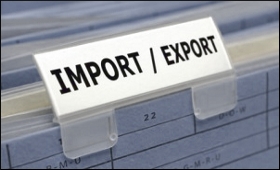|

|
Start an export business: Guide for beginners
|
|

|
|
| Top Stories |
 |
|
|
|
Bikky Khosla | 22 Jul, 2014
It's an undeniable fact that entering into exports can be a great way to expand a business. But how to start with it? This is one of the common questions asked by aspiring exporters. Taking the first step seems difficult -- what documents are required, how and whom to apply for them, how much time will it take, and so on. In addition, another key aspect is preparation -- how to get ready. Rushing into exports may lead to frustration and cash burn, and therefore putting a plan in place is a must for first time exporters.
First of all, You need to apply for an import export code (IEC) to import or export goods. You may apply for it online on the DGFT website or offline to the nearest regional authority of DGFT, filling an Aayaat Niryaat Form 2A (ANF 2A). The documents and information required are prescribed in the form. They include fee and fee details, two photographs, contact details, contact details of company, business type, type of export, bank account details, PAN card details, etc. In addition, a certificate from the bank (with whom you have a Current Account) is required to be submitted. If all documents are in order, you may expect to receive IE code through post office to your official address within one to two weeks.
The next step is to register the IEC code and your Authorized Dealer Code details with the port through which you want to export or import. For this, you need to approach your bank which will issue a letter to the Commissioner of Customs mentioning both the codes. After registration, you can now export or import goods through the port. Exporters intending to export under the export promotion scheme need to apply to the concerned EPC for registration accompanied by a self certified copy of the IEC number and prescribed fee.
Shipping procedure is another area first time exporters may face some difficulty. Shipping Bills or Bill of Export have to be filed for all goods moved for exports: the former in case of export by sea or air and the latter in case of export by road. There are different types of Shipping Bills: for export (i) of duty-free goods (white colored) (ii) under claim for duty drawback (green) (iii) of duty-free goods from bonded warehouse (pink), of dutiable goods (yellow) and under DEPB scheme (blue). Similarly, there are different types of Bill of Export for duty-free goods, dutiable goods, goods under claim for duty drawback, and duty-free goods ex-bond.
While the export documentation process demands some preparation, aspiring exporters should also keep in mind that starting hurriedly and without a plan is not a good idea. Mistakes in preparing the invoice, failure to modify products to meet overseas regulations, overlooking packaging needs required to meet legal requirements and cultural preferences, failure to translate documentation into relevant languages, miscalculating the expenses, underpricing or overpricing the products -- these are some of the common mistakes first timers fall prey to. Try to avoid them.
|
|
|
| |
|
|
|
|
|
|
|
Trade for beginners
V. Shivashankaren | Thu Oct 13 13:56:34 2016
Sir only today I read this article. I have attended one day class by two people but that is only an eyeopener. Your article will be more useful for us like those waiting for good fortune through new ways with kind regards

computers
tapiwa charivanda | Fri Jul 25 16:56:15 2014
i want to import laptops from India where do i start?

|
|
|
|
|
|
|
| |
| Customs Exchange Rates |
| Currency |
Import |
Export |
US Dollar
|
84.35
|
82.60 |
UK Pound
|
106.35
|
102.90 |
Euro
|
92.50
|
89.35 |
| Japanese
Yen |
55.05 |
53.40 |
| As on 12 Oct, 2024 |
|
|
| Daily Poll |
 |
 |
| Do you think Indian businesses will be negatively affected by Trump's America First Policy? |
|
|
|
|
|
| Commented Stories |
 |
|
|
|
|
|
| |
|